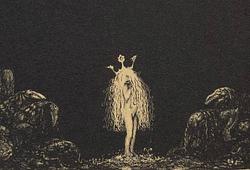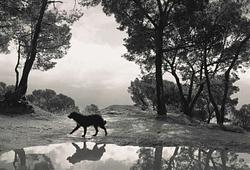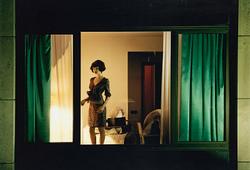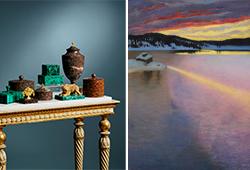Ellen Thesleff
Ellen Thesleff, Portrait (Thyra Elisabeth).
Signed E.Thesleff and dated -97. Oil on canvas, 30x38 cm.
Age-related wear. Creases. The canvas was cleaned and partially restored before the sale. A report is included for the buyer.
Provenance
MA T.Sundblom; managing Director Rurik Lindberg; through inheritance within the same family.
Exhibitions
- Exhibition at Ateneum, 1899.
- "Exposition universelle à Paris", 1900, no. 246. -Artists' Association of Finland jubilee exhibition, 1924, no. 404.
- "Ellen Thesleff memorial exhibition, Kunsthalle Helsinki, 1954, no. 15.
- "The 100th Anniversary Exhibition of the Ateneum Art Museum", Ateneum Art Museum, 24.10.-24.11. 1963 no. 294.
- "The Finnish Academy of Arts Travelling Exhibition-The Golden Age", Ateneum Art Museum, 17.3.-12.4.1964, no. 52.
- "Finsk Malerkunst", National Gallery, Oslo, 26.3.-21.5.1980.
- "Målarinnor från Finland", Nationalmuseum Stockholm, 10.4.-8.6.1981, no. 69.
- "The Finnish Academy of Arts exhibition - Women Artists", Ateneum Art Museum, 2.10.-15.11.1981, Tampere Art Museum, 22.11.1981.-10.1.1982, Turku Art Museum, 17,1.-7.3.1982. nr.68/80.
- "Ellen Thesleff", Ateneum Art Museum, 27.2.-24.5.1998.
Literature
Leonard Bäcksbacka, "Ellen Thesleff", Konstsalongens Förlag, 1955, no. 101.
"Ellen Thesleff", ed. Leena Ahtola-Moorhouse, F.G. Lönnberg, Helsinki 1998, no. 34.
More information
Ellen Thesleff (1869–1954) came from an old Eastern Finnish cultural family, probably with roots in the Baltic region or Russia. Her artistic career got off to an exceptionally favourable start, as her own father, the Helsinki engineer Alexander August Thesleff, was her first teacher and supported her plans to become an artist. The other members of the family were also musically and artistically gifted. Gerda (1871–1939) trained as a ceramist and the youngest daughter, Thyra (Söderhjelm, later Castrén, 1880–1959), became a silversmith. Her brothers Eynar (1867–1927) and Rolf (1878–1938) were also interested in art, but it was the three sisters who became particularly close.
In Helsinki Ellen Thesleff studied at Adolf von Becker's private academy from 1885 to 1887 and then at the Finnish Art Society's drawing school from 1887 to 1889. However, she was disappointed with the teaching and chose instead to paint in Gunnar Berndtson's studio from 1890 to 1891. It was during this period that she produced the work that can be considered her breakthrough: Echo. The painting, depicting a young shepherdess calling to the echo in the morning sun, is characterised by an enchanting atmosphere and romantic longing. Despite its connection to realism, the large areas of colour reveal traces of synthetism and a clear profundity, which Ellen Thesleff further refined during her studies at the Académie Colarossi in Paris between 1891 and 1893.
In Paris, she became good friends with Magnus Enckell, who was studying there at the same time. Enckell was completely enthralled by symbolism, and although Thesleff was greatly influenced by him, this artistic movement took different forms in the work of the two artists. While the profundity and melancholy of symbolism in Magnus Enckell's art are characterised by strong emotional expression and power, Thesleff's works are ascetic and painted with a sparse palette. At the same time, there is a tender and fragile elegance, which contributes to a sensitive and captivating whole. However, what both artists had in common was their worship of beauty, and considering that the 1890s were a human-centred decade from an artistic point of view, this meant a further departure from realism, which favoured traditional landscape painting. ‘Personality that shines from within and does not change with every weather, that is what I seek,’ wrote Magnus Enckell in 1891. This attitude united Thesleff and Enckell and, in many ways, the entire young Symbolist generation.
Thesleff's French role models were Puvis de Chavannes and Édouard Manet's early work with its clear surfaces and contours. She was also fascinated by the mystery and pure aesthetics of Egyptian art. She soon became enthralled by the purity of the Italian Renaissance, represented by artists such as Fra Angelico, Botticelli and the shimmering mosaics of the churches. She travelled to Florence for the first time in 1894, and it was not long before Thesleff began to regard Italy as her second home.
The sudden death of her father in 1892 hit Ellen Thesleff very hard, and she was unable to paint for a long time due to deep depression. At the same time, her father's passing further deepened the family's bond, which was mainly concentrated on her mother and three daughters, Ellen, Gerda and Thyra. The harmony within the family circle became something that even outsiders admired.
Ellen Thesleff's younger sister Thyra was one of her favourite models, and the first portrait of her was painted in 1892. Her style changed later in the 1890s, with the addition of pale green and blue-violet to her palette. The portrait of Thyra Elisabeth from 1897, now for sale, is a stylistic gem that shows Ellen Thesleff's artistic expression before the early 20th century oriented her towards a more colour-driven style. Just like the artist's acclaimed and well-known Self-Portrait from 1895, this work has a mysterious depth, a great and stripped-down calm, and a melancholic harmony. Thyra is leaning forward and almost gives the impression of stepping out of the painting. Her gaze is dreamy but at the same time deeply concentrated, the background rich in nuance and vibrant. With admirable precision, the artist has captured the innermost essence of her beloved little sister.




















































